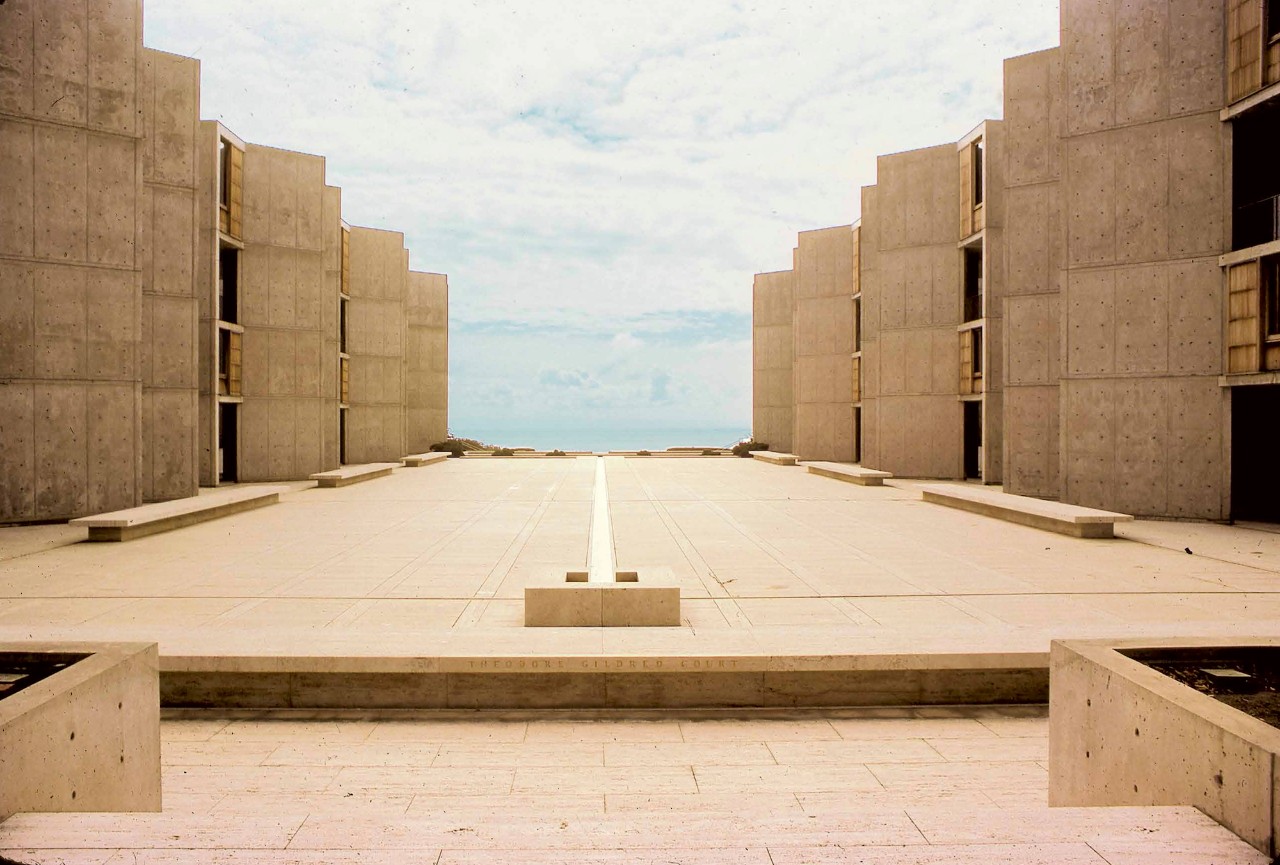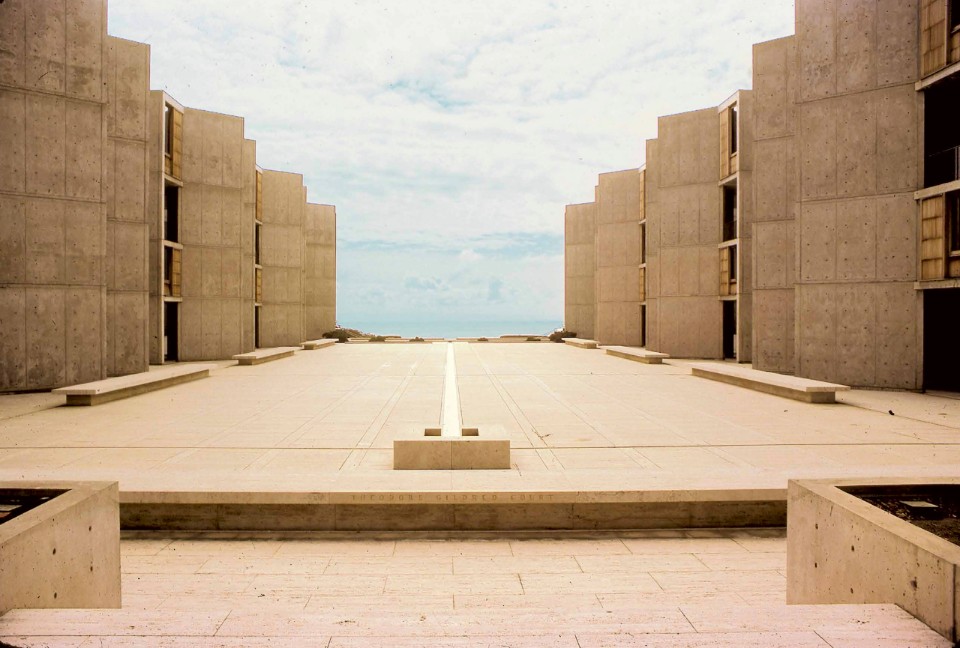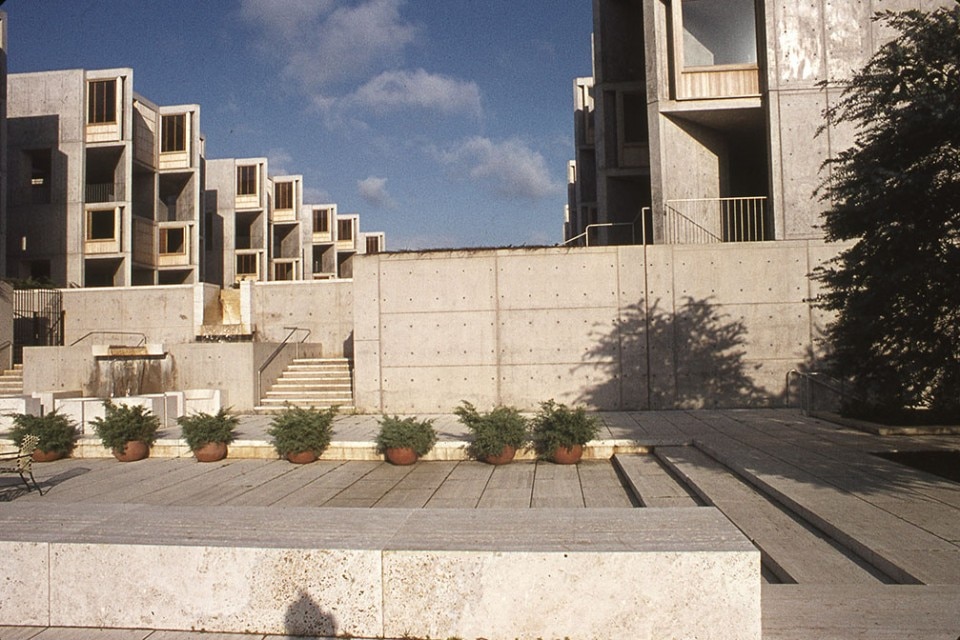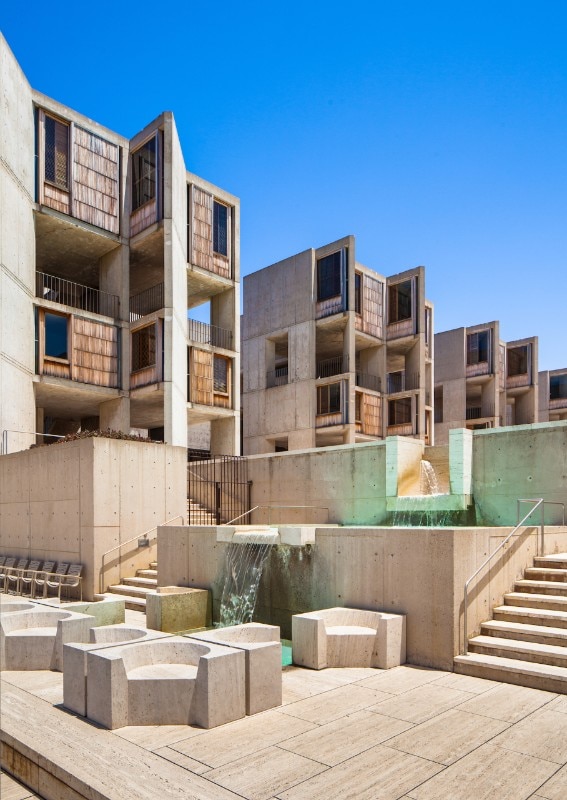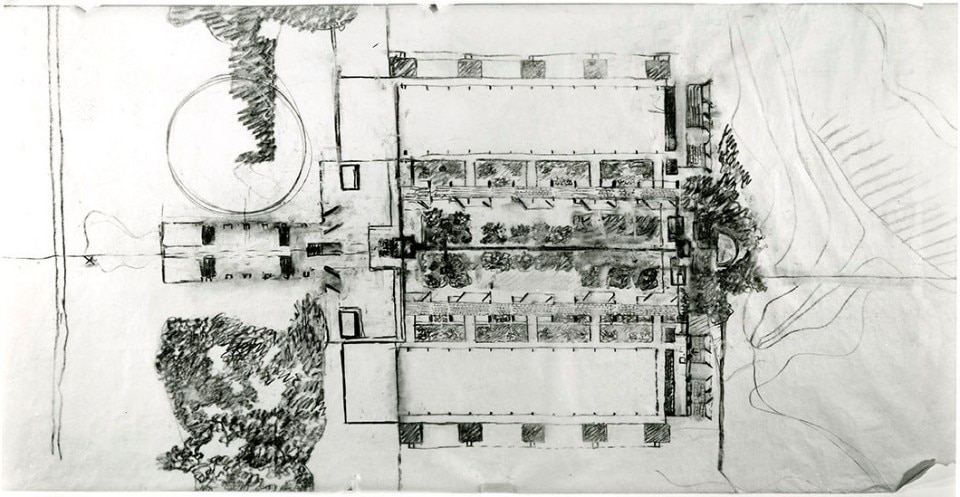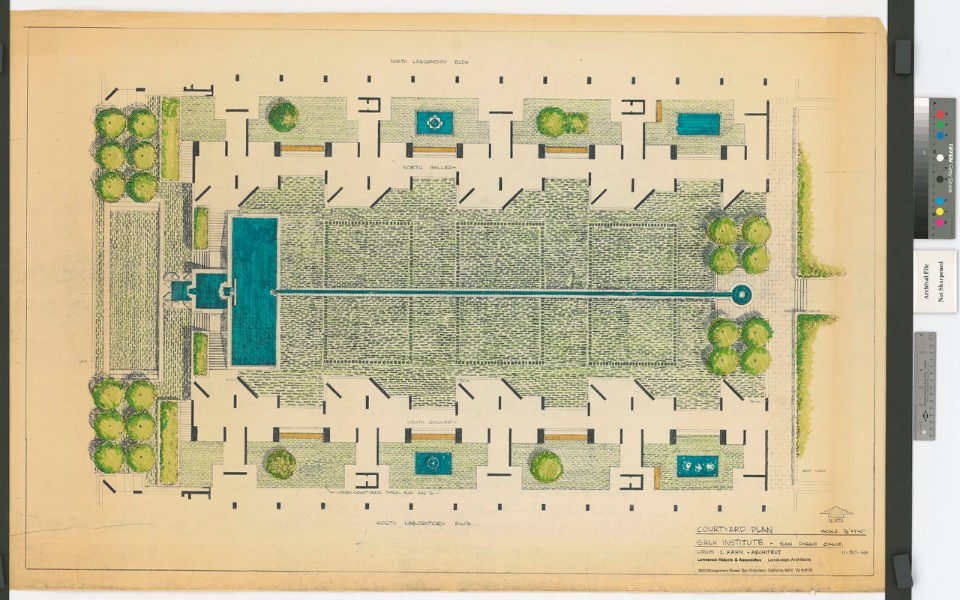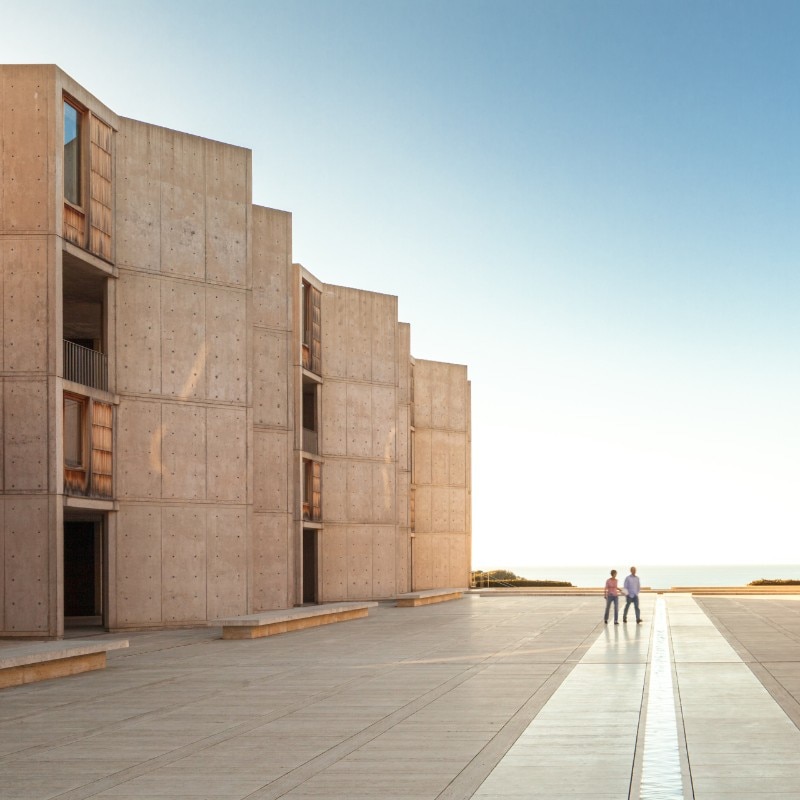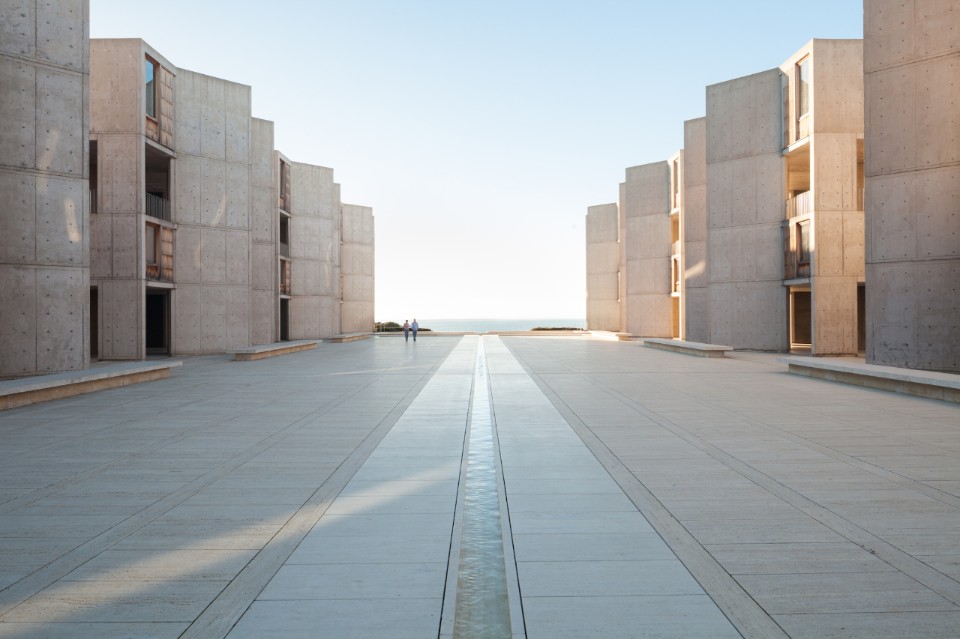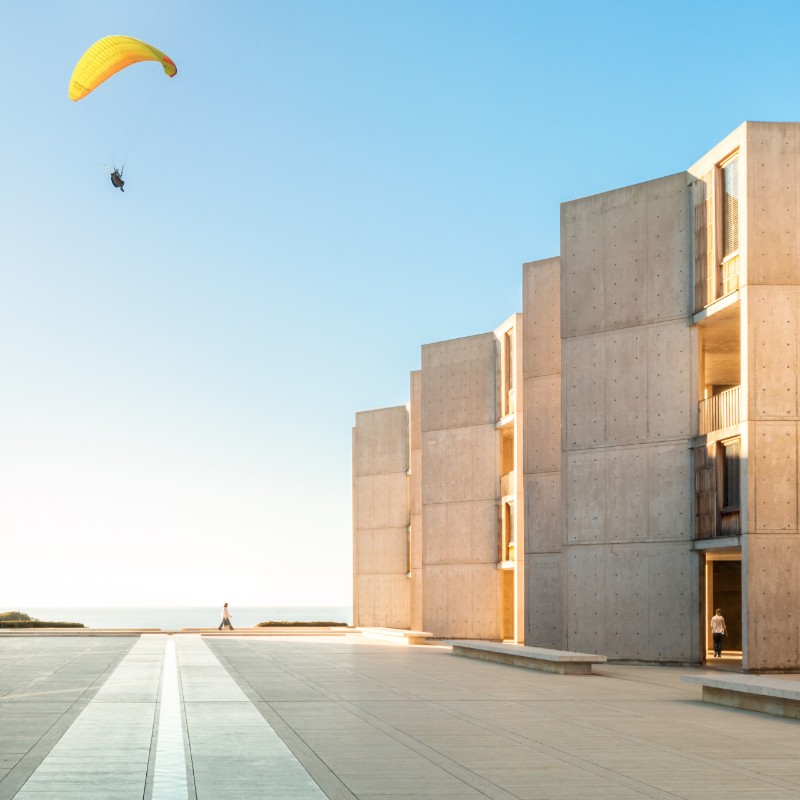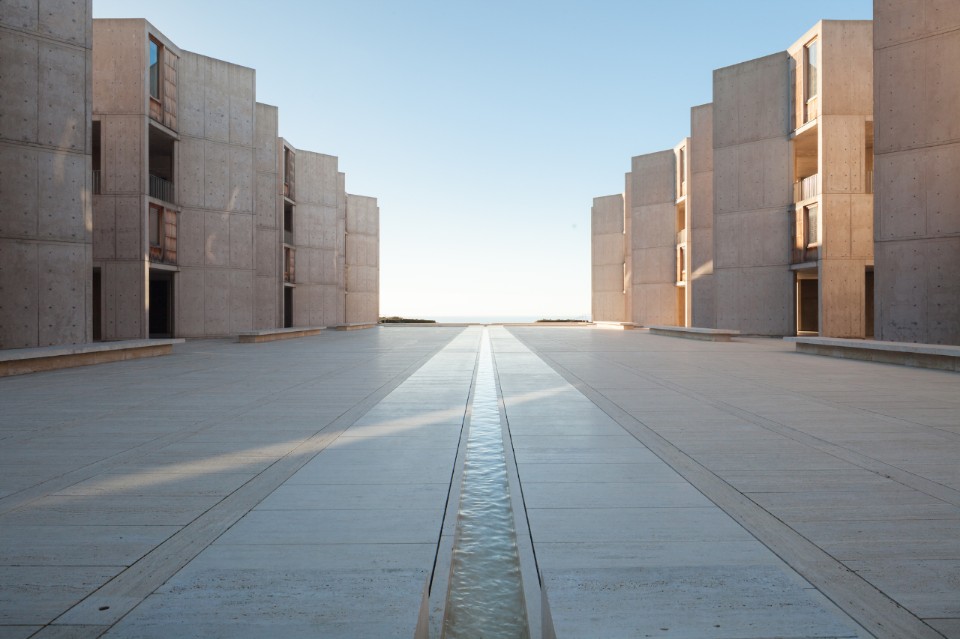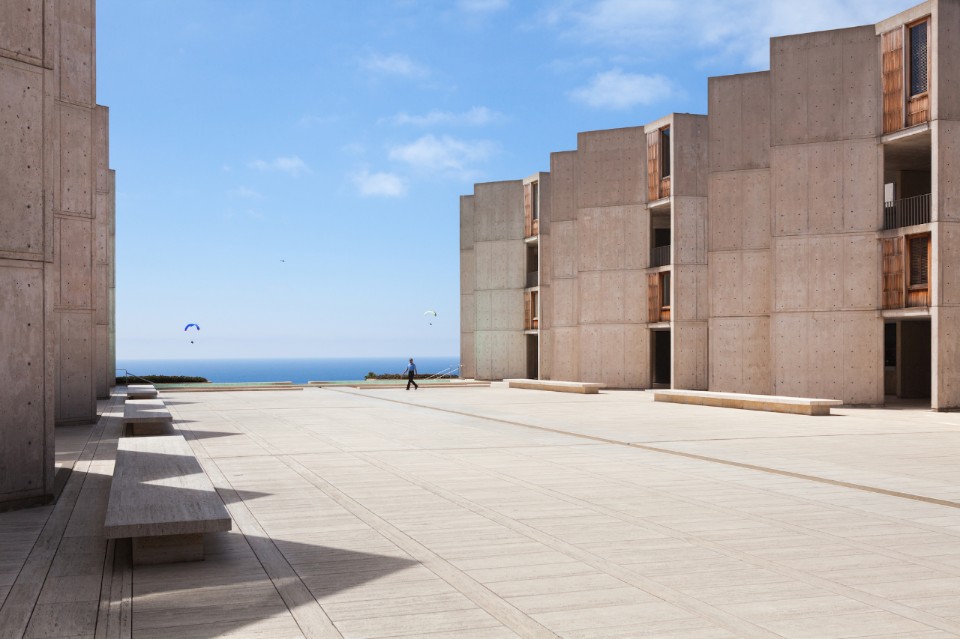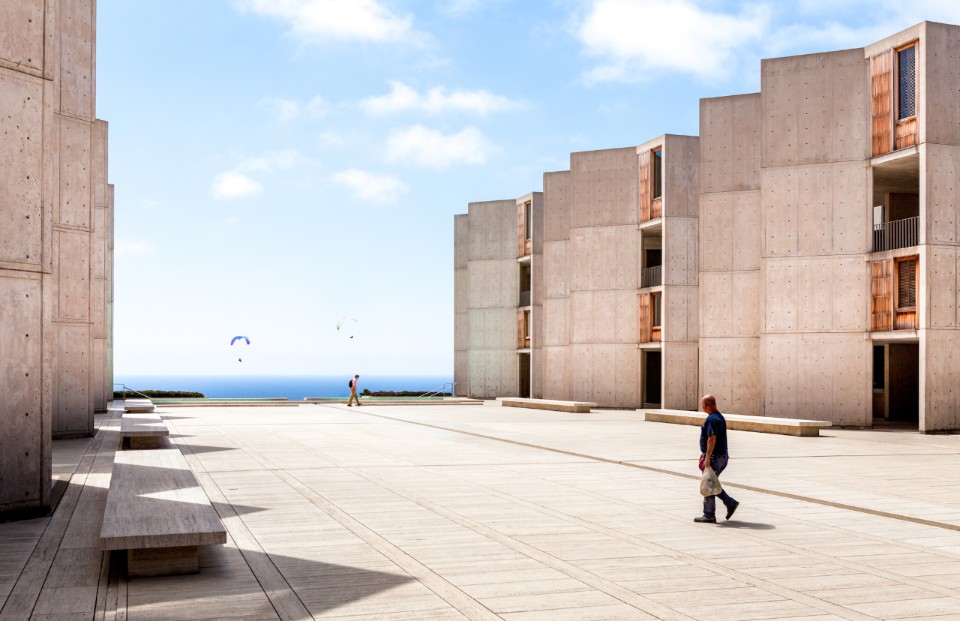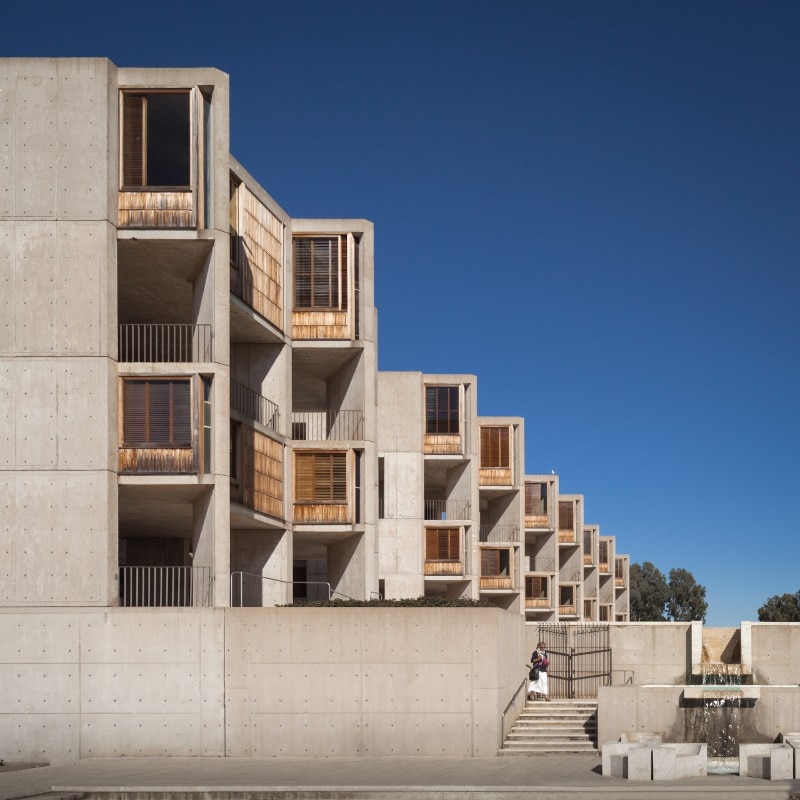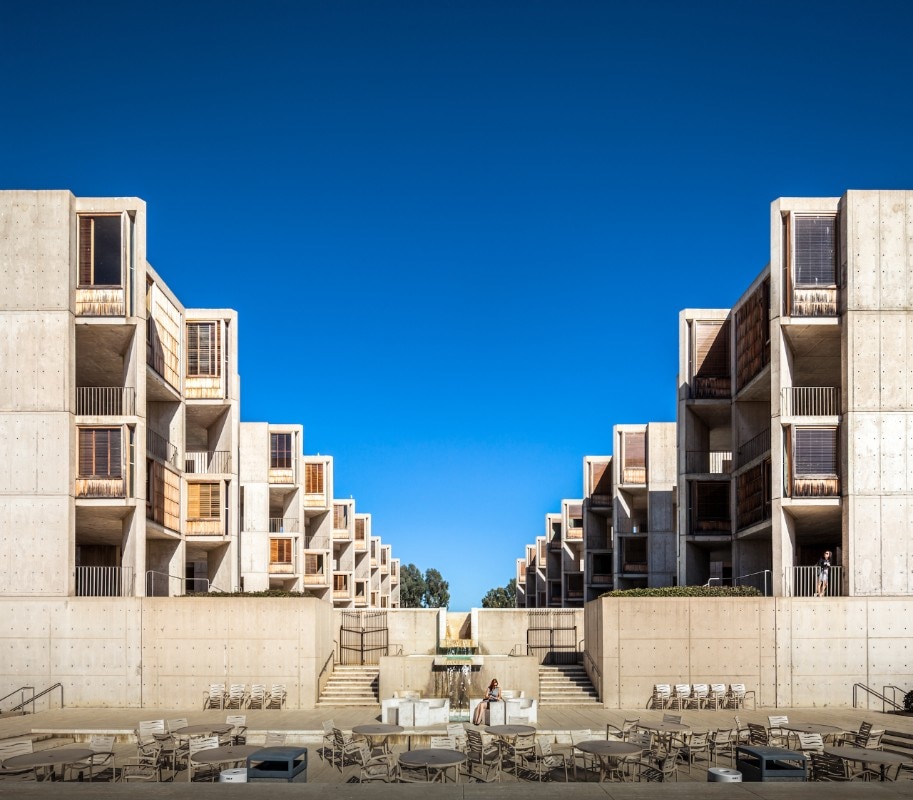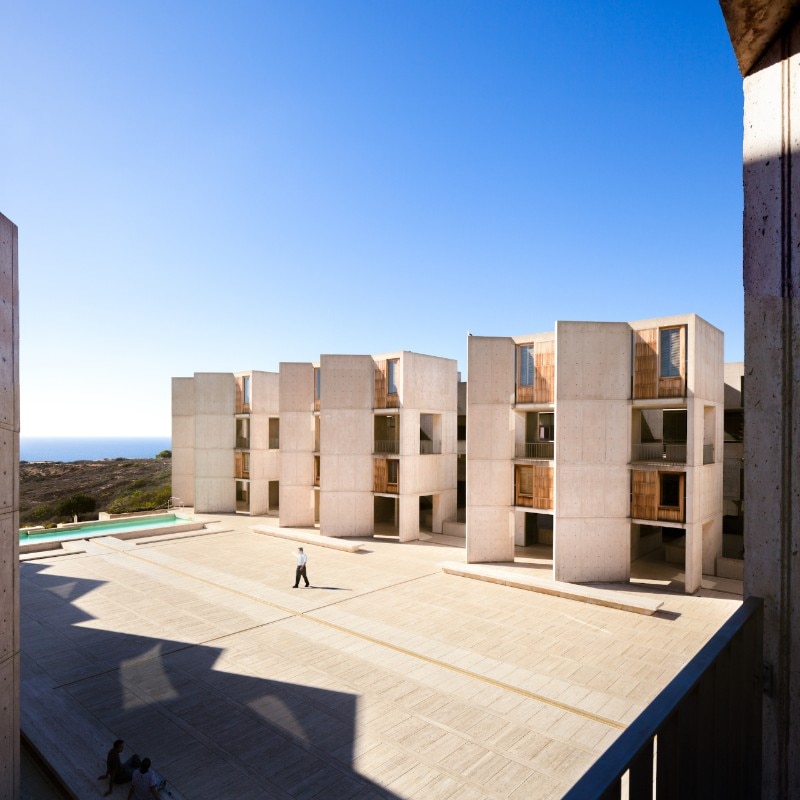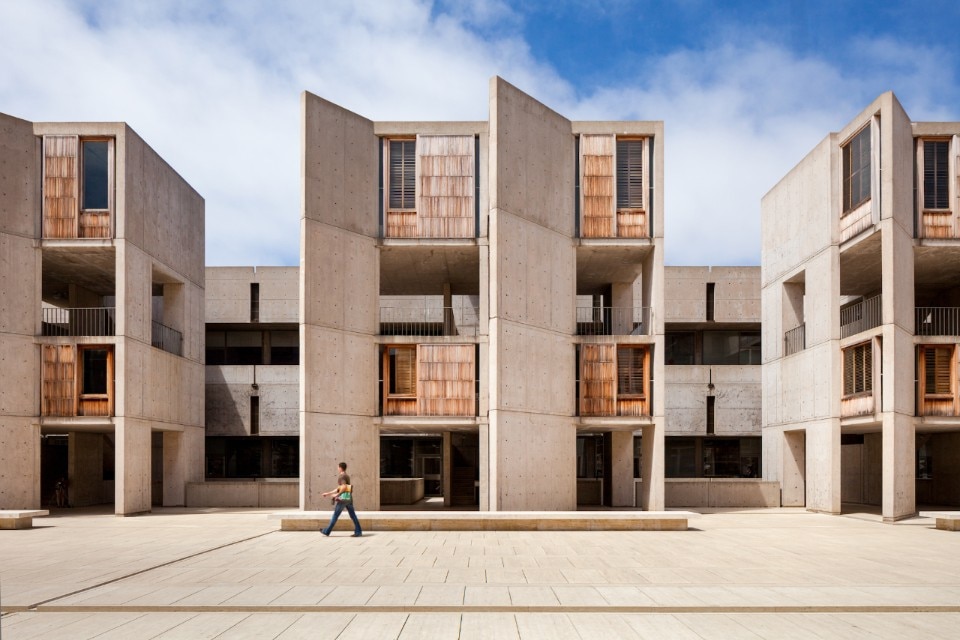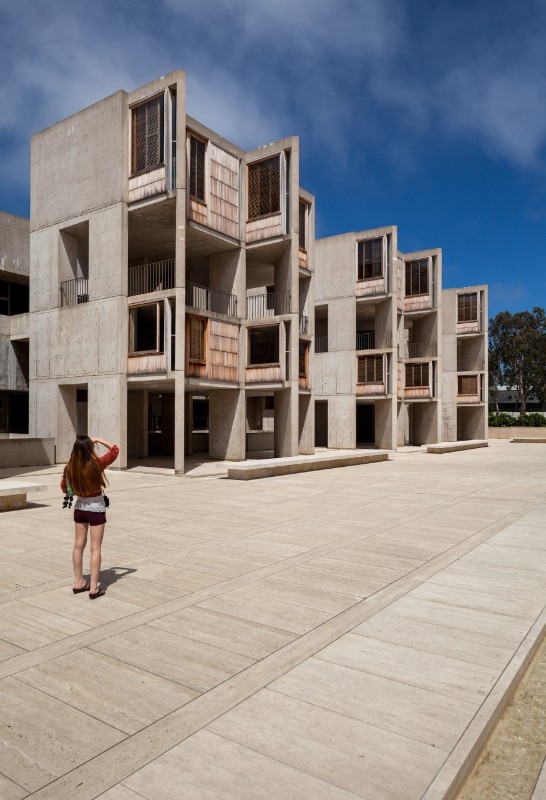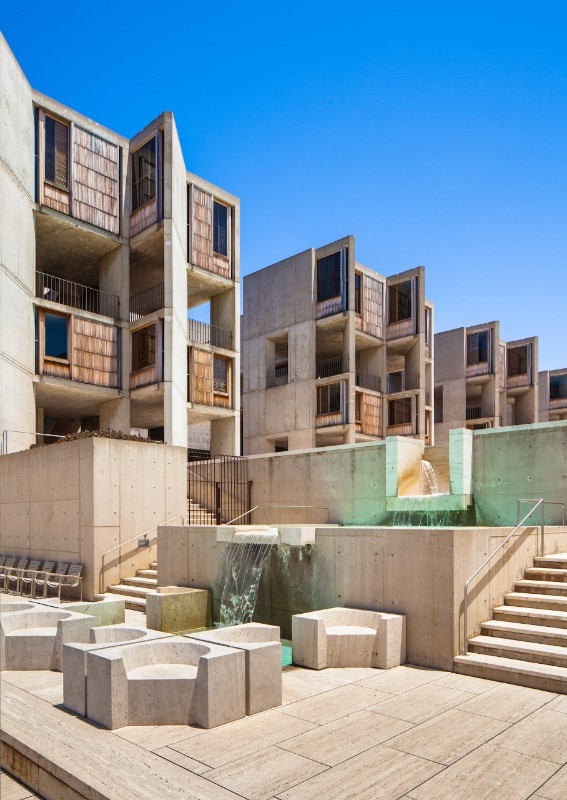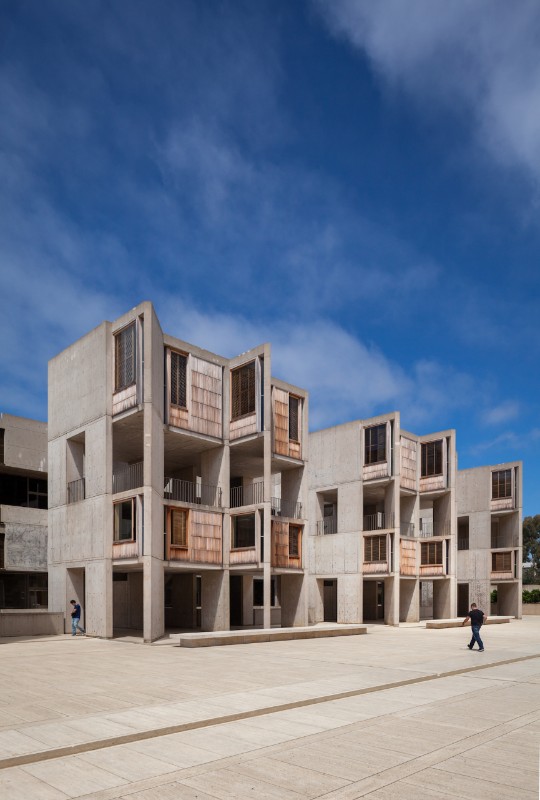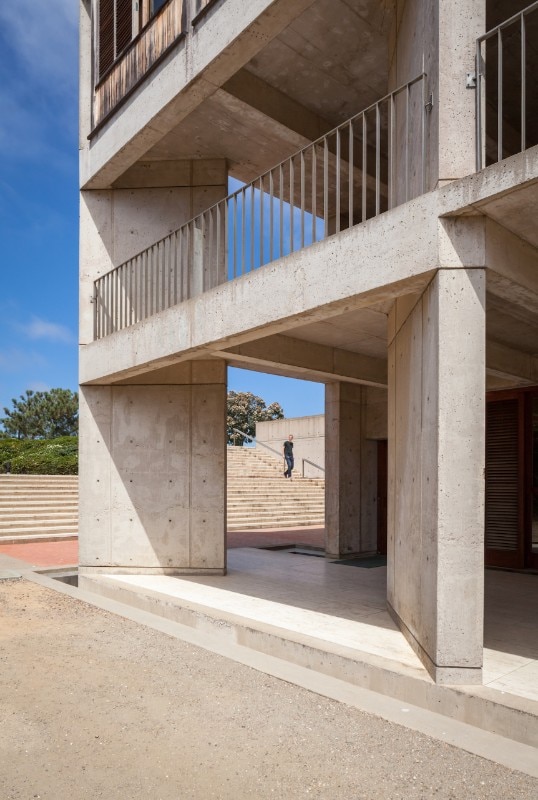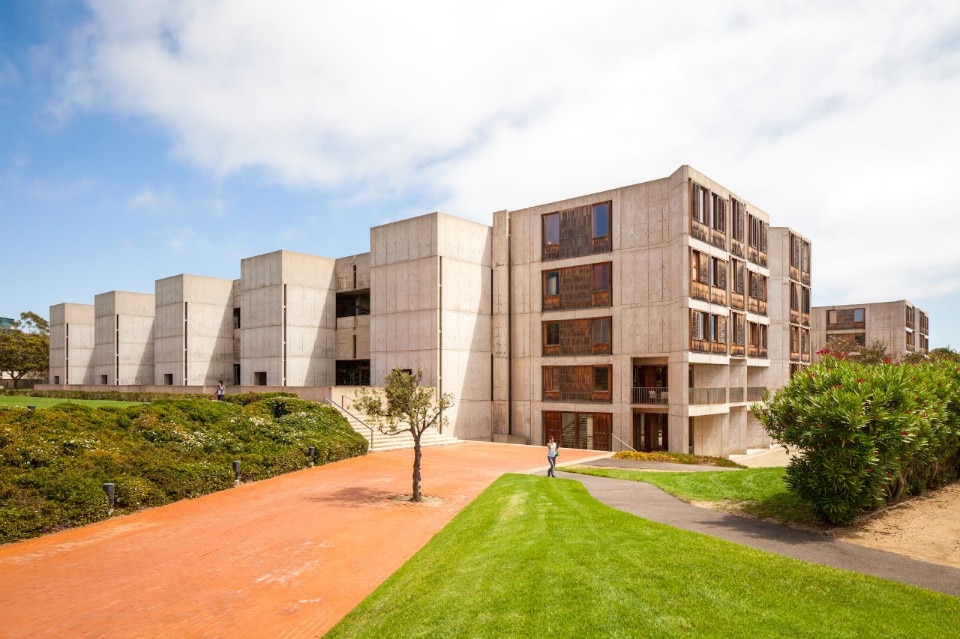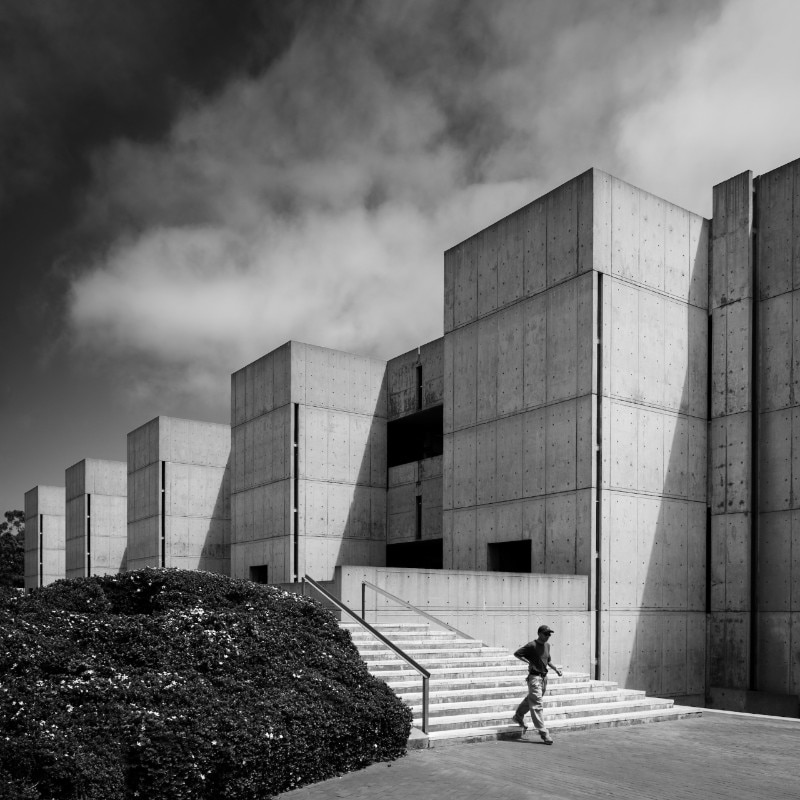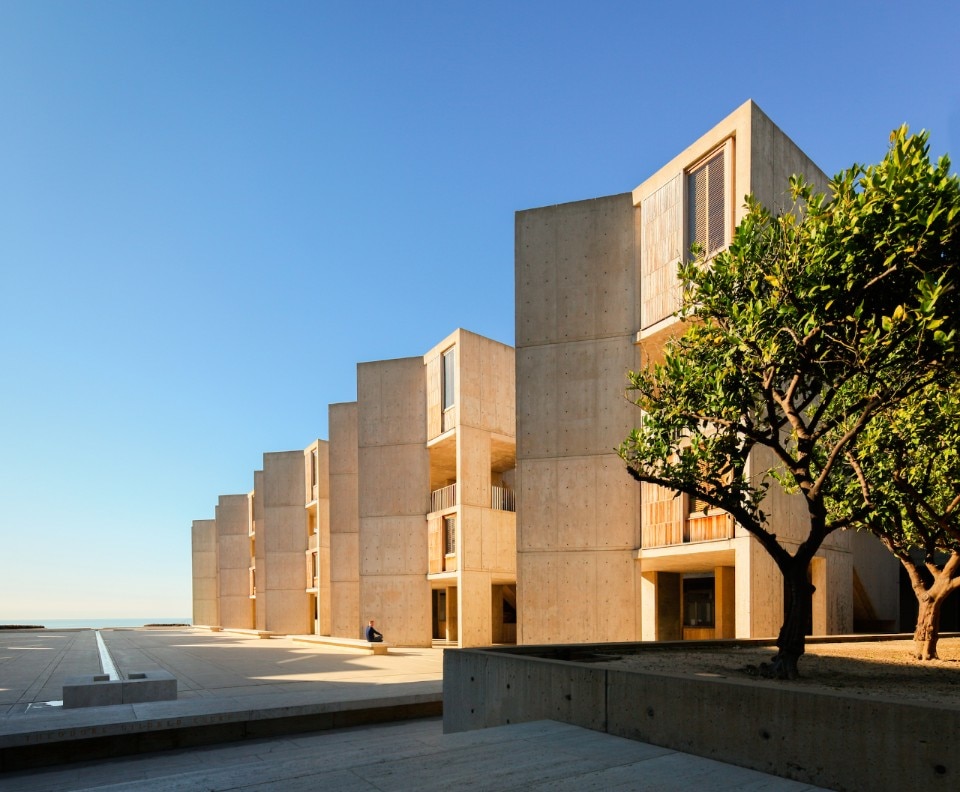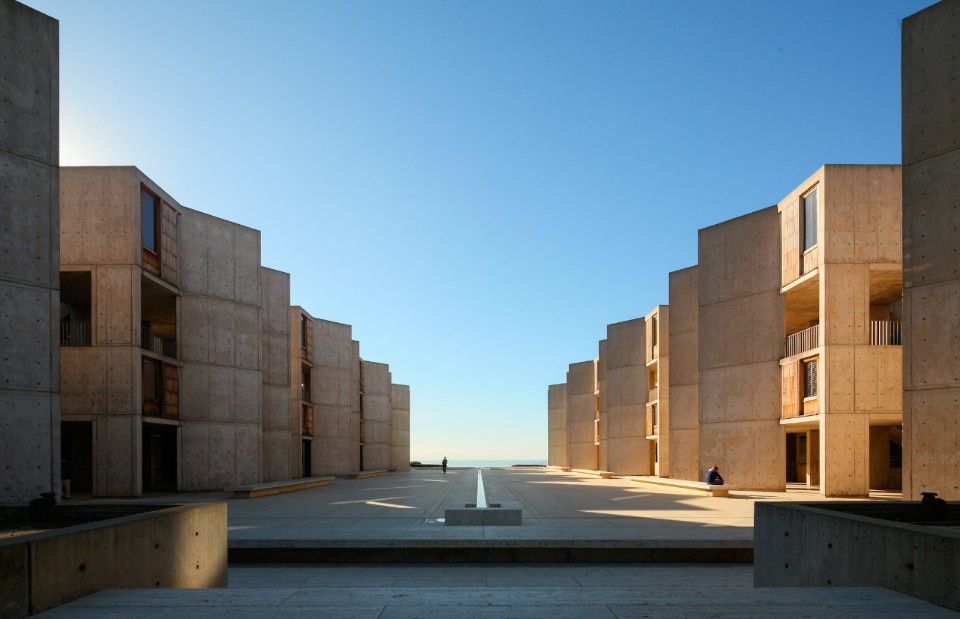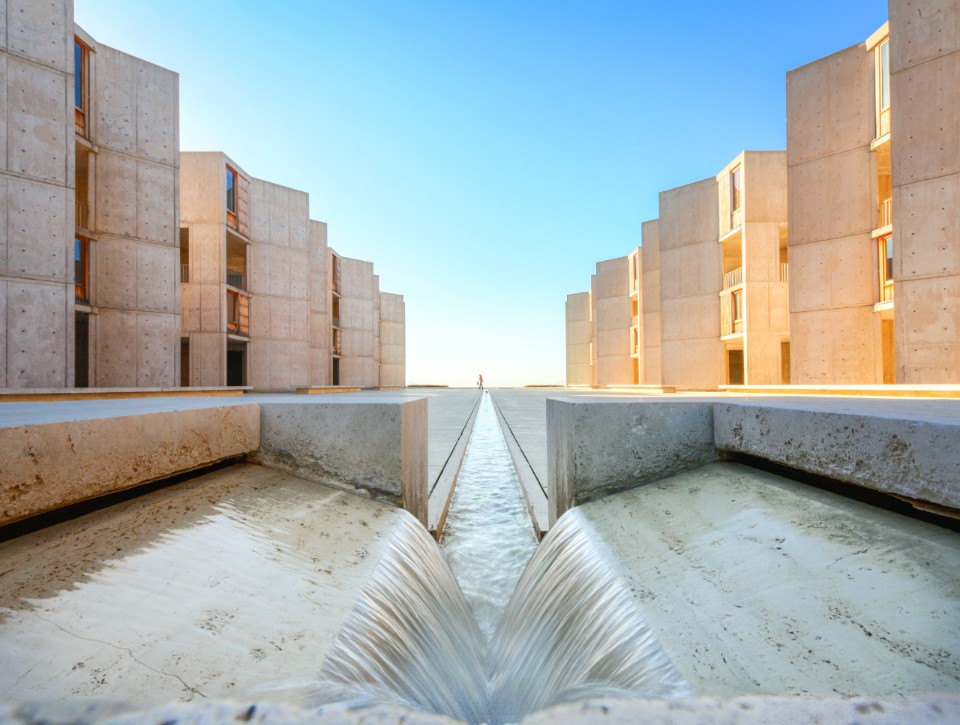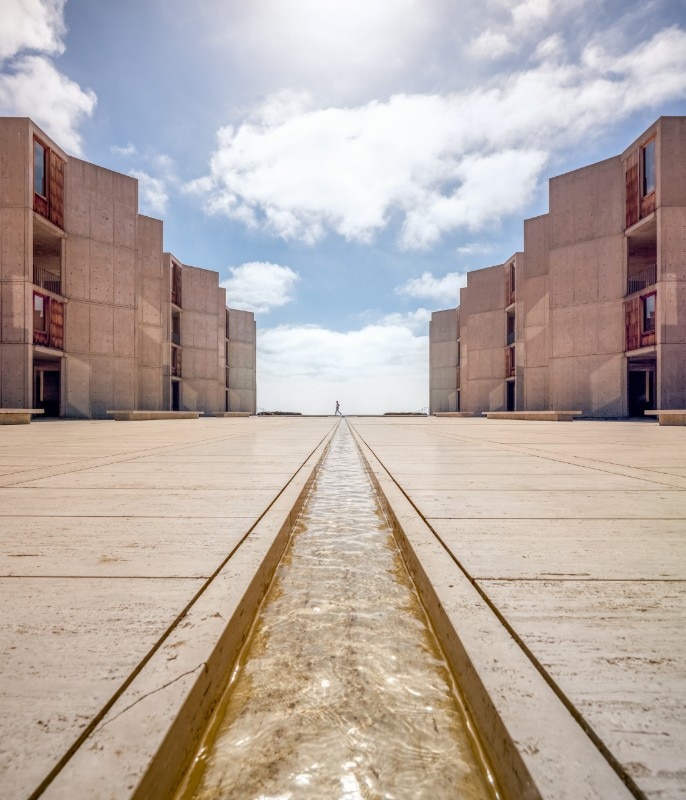This article was originally published in Domus 10523, January 2020.
In the film industry, it is difficult to do justice to the full range of figures who were responsible for any particular detail or ambience that will prevail in the realised version of a work, which accounts for the infinite credit list that follows any feature film. To a lesser degree, this is also the case with the acknowledgements that accompany the publication of a work of architecture. Apart from the anecdotal credit accorded by Kahn to Barragán in the following reminiscence, Barragán as far as l know was never formally credited.
“I asked Barragan to come to La Jolla and help me in the choice of the planting for the garden... When he entered the space he went to the concrete walls and touched them and expressed his love for them and said as he looked across the space towards the sea, ‘l would not put a tree or a blade of grass in this space. This should be a plaza of stone, not a garden.’ I looked at Dr Salk and he at me and we both felt that this was deeply right. Feeling our approval he added joyously, ‘lf you make this space a plaza you will gain a facade, a facade to the sky.” The symbolic import of the central courtyard derived from the fact that Kahn had lined both sides with the scientist’s honorific offices in contrast to the industrial character of the laboratories situated behind and below, covered in August Komendant’s initial structural design with wide-span, reinforced-concrete folded plates, the tectonic monumentality of which would have given them an equally honorific character. This expressive section was eventually abandoned in favour of a simpler and more economical solution.
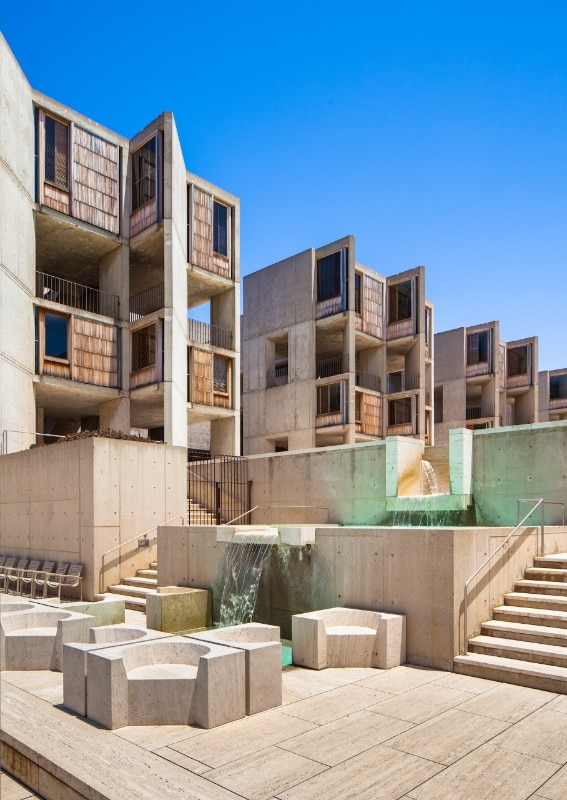
In retrospect, both Kahn and Barragán may be seen as proto-postmodern architects inasmuch as, by the late 1950s, they had both distanced themselves from the Modern Movement, not only as this had evolved in Europe between the two World Wars but also after 1945 in the Neo-Miesianism that was emerging in Chicago, New York and Mexico City in the post-war decade.
Despite his brief association with the German émigré architect Max Cetto, Barragán, ever the architect-developer, would be influenced throughout his architectural career by his grand tour through North Africa and France in the first half of the 1930s, notably Morocco where he first encountered Islamic architecture and the South of France where he happened upon the Art Deco gardens of Ferdinand Bac. The influence of these experiences became evident in his work after his purchase of the supposedly unbuildable volcanic landscape of Pedregal, which he first opened up with the semi-public garden fountains and sculptural set pieces designed by the German sculptor Mathias Goeritz.
For his part Kahn, having been an empirical New Deal architect in the 1930s, finally overcame the influence of Mies in his Yale Art Gallery, New Haven, under construction in 1952,the year of his residency at the American Academy in Rome which had enabled him to visit the archaic remains of Greece and Egypt, with the effect of returning him to the spatially didactic Axonometric of Auguste Choisy’s Histoire de l’Architecture of 1899, which he had first read as a student of Paul Cret in Philadelphia in the 1920s.
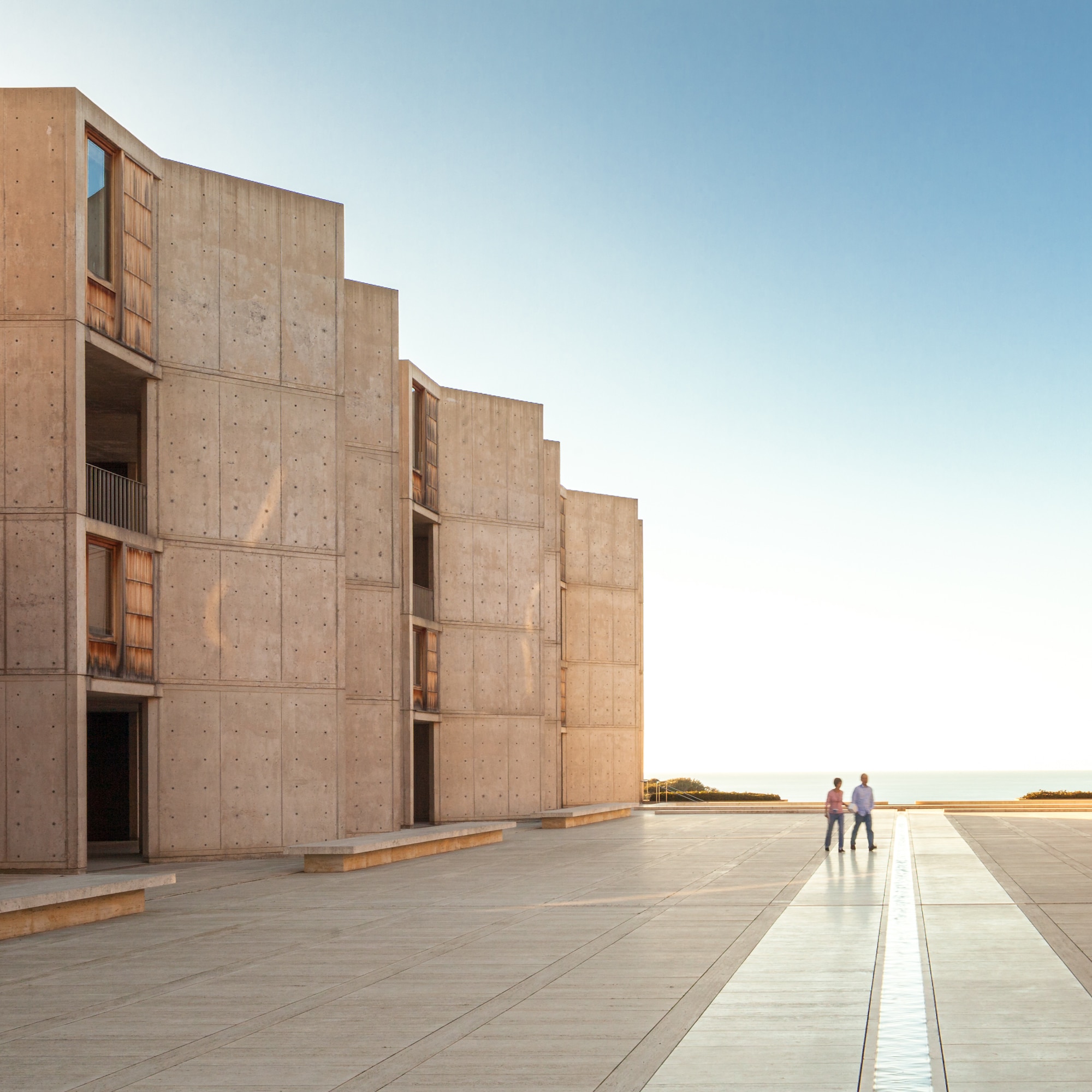
 View gallery
View gallery
What Barragán contributed to the Salk Institute came not only from his appreciation of Islamic architecture but also from his passion for water fountains, evident in the gardens he had designed for the middle-class residential settlements of Los Arboledas and Los Clubes in the second half of the 1950s. Legend has it that, after advising Salk and Kahn on site at La Jolla, Barragán, ever the self-styled aristocrat, went for a ride with an equestrian colleague in San Diego and came back more than a little self-satisfied, having arranged for a contribution of additional funds with which to complete the project. All of these circumstantial events led to the fact that the Salk lnstitute is the only work by Kahn to employ a central water fountain and axial channel, a feature which surely testifies to the influence of the Islamic tradition. Originating in a cubic concrete source, faced in travertine and discharging towards the Pacific Ocean at the end of the channel through an equally monumental gargoyle, this may in turn be read as the alpha and the omega of the Hebrew tradition.
The other figure who played a seminal role in the design of the Salk Institute, as in almost all of Kahn’s institutional work, was his engineer August Komendant who designed the interstitial service floors sandwiched between each open laboratory floor as hollow folded-plate structures which doubled as service corridors, from which services could be easily fed either up or down to the laboratories. This undulating structure gave a certain monumental character to the laboratories. In the event, this expressively tectonic form had to be abandoned on the grounds of cost and the service floors were realised as flat-slab constructions spanning between concrete Vierendeel trusses.


